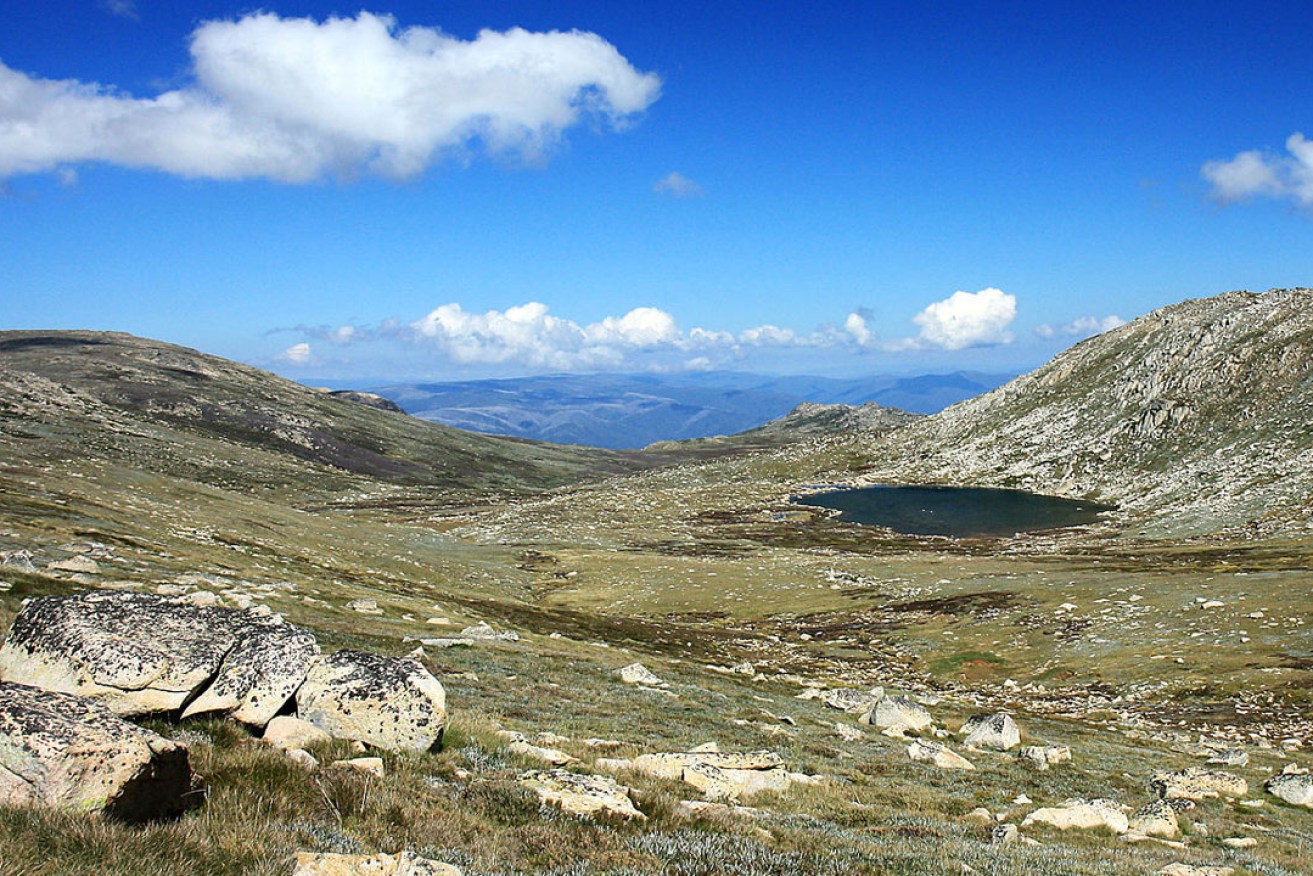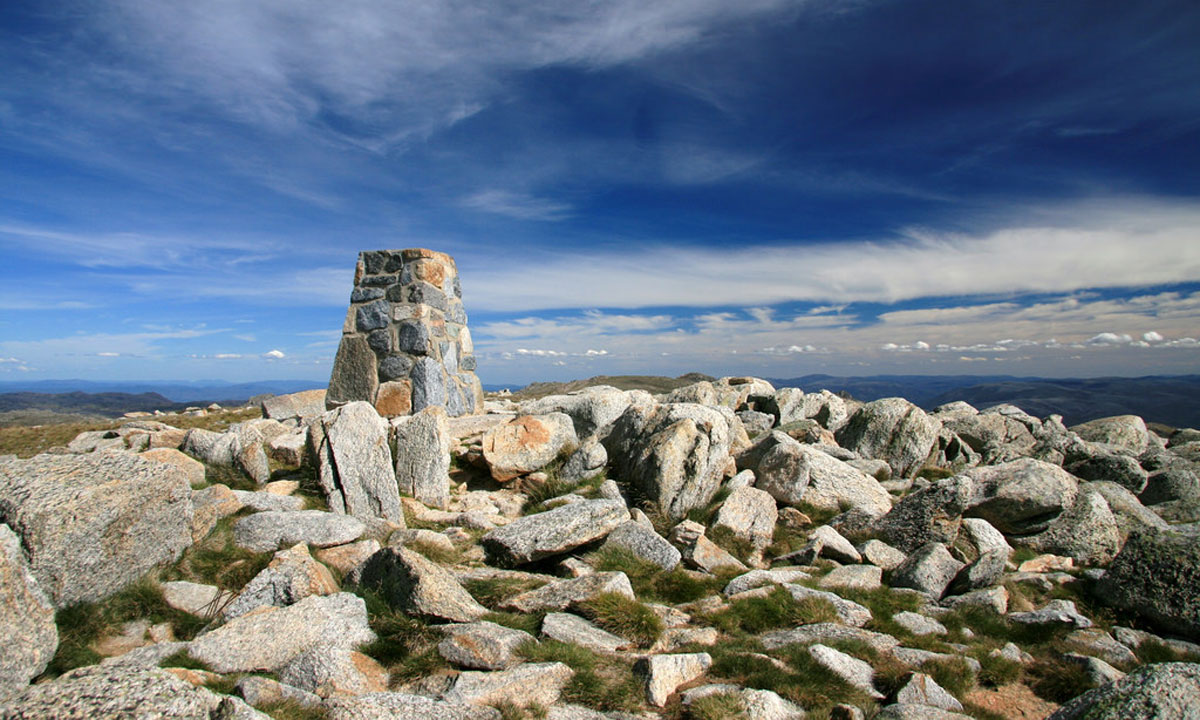Conquering Kosciuszko with kids
The 13km round trip to Mount Kosciuszko from Thredbo offers many rewards for walkers both young and older – especially when there are still patches of snow around.

Lake Cootapatamba - the national park's highest glacial lake. Photo: Andrea Schaffer / Wikimedia Commons
As we reach the summit of Mount Kosciuszko my six-year-old girl breaks into a run. She wants to be the first in our family to stand at the highest point in Australia or, as she says, “be the highest person” in the country. Not to be outdone, my eight-year-old son starts running too.
We’ve trudged through patches of snow to make it here. The 6.5km journey has been a challenge for little legs. There have been moments of whining and tiredness. But at this moment, it’s all worth it.
This moment will stay with them for the rest of their lives.
As we sit down and unwrap our sandwiches, I lean over and say to my children: “You see, little people can do big things.”
I haven’t told them they need to walk all the way home again yet.
The 13km round trip to Mount Kosciuszko from Thredbo is one of the best walks in Australia.
At this time of year the wildflowers are just starting to bloom. Tiny specs of yellow are dotted through the rocky landscape. The region last saw snow in November, delaying the start of the warm weather. It’s good news for families as the flowers are likely to be in full bloom during the school holidays.
Right now, there are still large patches of slushy snow to walk through on the way to Kosciuszko. The best way to tackle them, going uphill, is to dig your toes in first.
The children, however, throw themselves onto the ground forming snowballs with their hands to throw at everyone nearby.
You can do the walk yourself, but an experienced guide will be able to show you where to find some of the alpine region’s unique animals. Searching for animals builds in loads of breaks for the kids and keeps their attention focused.
On the way up the mountain, our guide helps us to find Mountain Galaxia (native trout) in a snow-dusted stream. These tiny brown fish actually swim up the river. They can jump from one small pond to another.
At Lake Cootapatamba Lookout, instead of gazing on the national park’s highest glacial lake, all eyes are focused underneath the brown grated walking track. A small native rat scurries among the bushes. It’s a rare sighting and one that only occurred thanks to the eagle eye of our guide.
From the lookout, the view of Mount Kosciuszko and Lake Cootapatamba is stunning. A wall of snow sits on the eastern side of the mountain. The lake, which was naturally dammed behind piles of rocks left behind by retreating glaciers, sits at the base of the mountain. The ice around the edges gleams blue in the sunlight.
From here it’s just 2.4km to the top of Mount Kosciuszko but it’s the hardest part of the journey. The track has been covered by snow.

The cairn on top of Mt Kosciuszko. Photo: Mick Stanic / flickr
As we wait for descending climbers, the children build a snowman, rolling the sticky snow into balls and searching for stones for eyes. To climb up Kosciuszko we kick at the snow with our toes, creating our own steps. At times the children stumble and fall into the snow. But they pick themselves up, dust themselves off and keep going.
Once they make it to the top, they start running. The sense of achievement and competition spurring them on.
Our guide gives the children a certificate of achievement. It’s something they will cherish and show all their friends at school as proof they climbed the highest mountain.
After lunch, and the obligatory photo at the summit marker, we begin the round trip home. The steep hill on the way up is much easier to go down if you slide.
One by one, on our bottoms, we slip and slide down the edge of Mount Kosciuszko, screams and giggles echoing through the valley. It’s so much fun, that my son climbs up again for a second turn. All complaints about tiredness are temporarily forgotten.
When we stop to rest at Rawson Pass (the highest toilets in Australia), my son collects a bowling ball sized snowball. He tells everyone that he’s taking it back home. The 6.5km journey back to Thredbo doesn’t feel nearly as far as the walk up to the summit, even with a freezing snowball in hand and wet pants.
When we finally reach the village, with the snowball, it’s time for celebratory hot chocolate. Legs aching from the walk, it’s a relief to sit and rest.
As they fuel up, the kids tell us they learnt they could do something big by breaking it into small chunks. We tell them it’s important to believe you can do something and keep going.
Playing there: Guided tours of Mount Kosciuszko depart from Valley Terminal at 10am every Tuesday, Thursday and Saturday. Adults $50, Children $35, Family $100 (including 2 adults and up to 3 children). The 13km round trip takes five hours to complete.
Staying there: Boali Lodge in Thredbo village provides family accommodation in loft-style rooms with views over the Crackenback range. The lodge is fully catered and will even provide sandwiches for you to take up the mountain.
* The writer travelled as a guest of Thredbo resort and Boali Lodge.
-AAP




